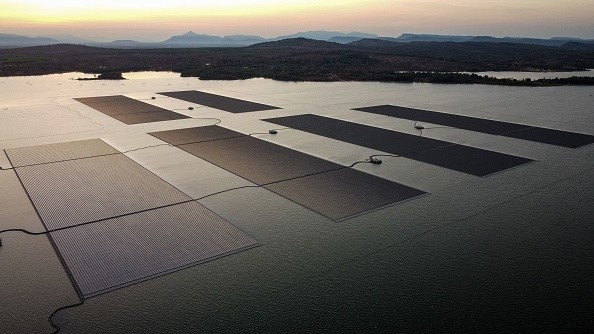Wind, geothermal, solar, hydro, tidal, hydrogen, and other renewable energy sources are becoming increasingly popular across the world.
Renewables are being adopted by countries, organizations, and people for a variety of compelling reasons.
These small-scale, renewable generators are intermittent and low-output, and they are frequently scattered throughout and integrated inside power networks in significant numbers.
Small-scale renewable resources in the UK

University of Nottingham mathematicians analyzed data from smart meters to examine how grid composition changes over time and discovered that resilience varies throughout a day and that high adoption of solar panels can make the system more vulnerable to collapse.
According to ScienceDaily, the study was led by Oliver Smith, a researcher at the University of Nottingham, who notes that the growing proliferation of tiny, intermittent renewable energy sources is creating a fast shift in the structure and composition of the power grid.
Indeed, the functional structure of the grid can alter during the day as customers and small-scale generators arrive and go.
They also studied how grid composition changes over time using data from smart meters in UK homes. They used a dynamic model to examine how these changes affectpower system resilience to catastrophic breakdowns.
Further, they discovered that adaptability varies wildly during the day and that a large uptake of solar panels may make the system more susceptible to failure.
The researchers discovered that renewable energy stored in residential batteries is mostly used to reduce household power prices while doing little to reduce the probability of network failure.
They propose that the power supply from these batteries be planned to optimize power grid resilience.
Advantages of Renewable energy
Renewable energy methods create electricity directly from the environment. These energy sources include to mention a few, sunlight, wind, tides, and biomass, to name a few.
According to EnergySage, renewable resources will not run out, however many types of fossil fuels will become increasingly difficult to access as we utilize them, possibly increasing both the expense and environmental effect of extraction.
In most circumstances, renewable energy systems require less total maintenance than traditional fuel-powered generators.
This is because generating technologies such as solar panels and wind turbines have few or no moving components and do not rely on flammable or combustible fuel sources to function.
Fewer maintenance required equals more time and money saved.
Disadvantages of Renewable energy
According to Conserve Energy Future, when compared to traditional types of energy generation such as fossil fuel, there are still hurdles to producing huge amounts of electricity with renewable energy technologies.
By far the most electricity is still produced by fossil fuels today. This effectively means that it cannot be relied on to power the entire country.
Renewable technologies are still relatively new to the market, which means they lack much-needed efficiency.
The installation and maintenance costs for such facilities are relatively costly due to a lack of basic understanding of how to properly harness various kinds of energy. This creates forecasting issues, and investors may be hesitant to invest for fear of not seeing immediate profits.
© 2026 NatureWorldNews.com All rights reserved. Do not reproduce without permission.





